The construction of the Gateway will be humankind’s most ambitious endeavor in space. A new kind of construction – a new way of thinking about building things – will be required to build what is, essentially, a spaceport.
To Build Big Structures Offworld, We Need:
- The Technology to build it
- The Money
- The Will
The Technology
To construct a massive spaceport like the Gateway would take a generation if we didn’t utilize construction techniques like those used in modern shipbuilding and automobile factories.
Ships today are constructed by connecting prefabricated sections constructed in other parts of the shipyard. This method is known as “Block-construction”. Smaller things that need to be fabricated in large quantities are built using assembly lines. By bringing both of these methods together we can create large blocks or segments in a rather quick manner using a machine designed for just such a purpose. We call this machine the GSAL
The GSAL (Gateway Segment Assembly Line)
To build a Gateway we will first construct an automated GSAL. The GSAL will create segments that are each unique for that part of the Gateway: For instance, to create the Hub we will weld together a series of square segments; to create ring sections the GSAL will reconfigure its beam guides to fabricate wedge-shaped segments. In this manner, the outer shell of the Gateway can be erected fast and welded tight around airlocks so workers can finish the interior without the use of heavy spacesuits. It is essential to build the Gateway fast so it can generate revenue sooner. But safety will never take a back seat in space construction or operations. Once completed the Gateway will face months of operational testing to ensure redundant safety systems will all function as designed.
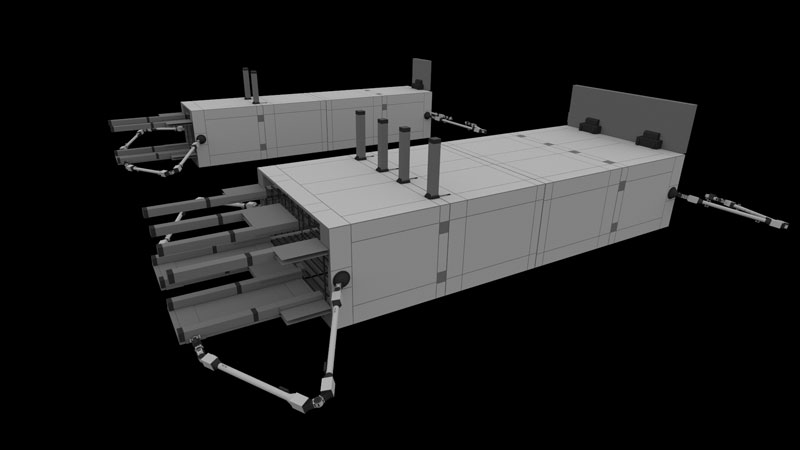

Other Equipment Needed for Construction in Space will include

- Pods, with astronauts inside will move heavy materials and structural members.
- Bots, remotely operated by technicians from Earth or nearby habitation modules, will assist suited construction workers.
- New, heavy-duty construction space suits, with protective armor to withstand the inevitably harsh working conditions in space.
- Drones, for EOR ( Errant Object Retrieval) and many other operations in Space Construction.
Bots

New EVA Spacesuits

Drones for Space Operations
We will develop three drones designed to be tested and operated at large space stations. How will they work? An astronaut inside the station will type into the database where they will be working and what tools and parts they will carry with them. The software will check that each of the drones has this information in its database for recognition and recovery, should they begin to drift away unnoticed by the astronaut.
Observer Drones
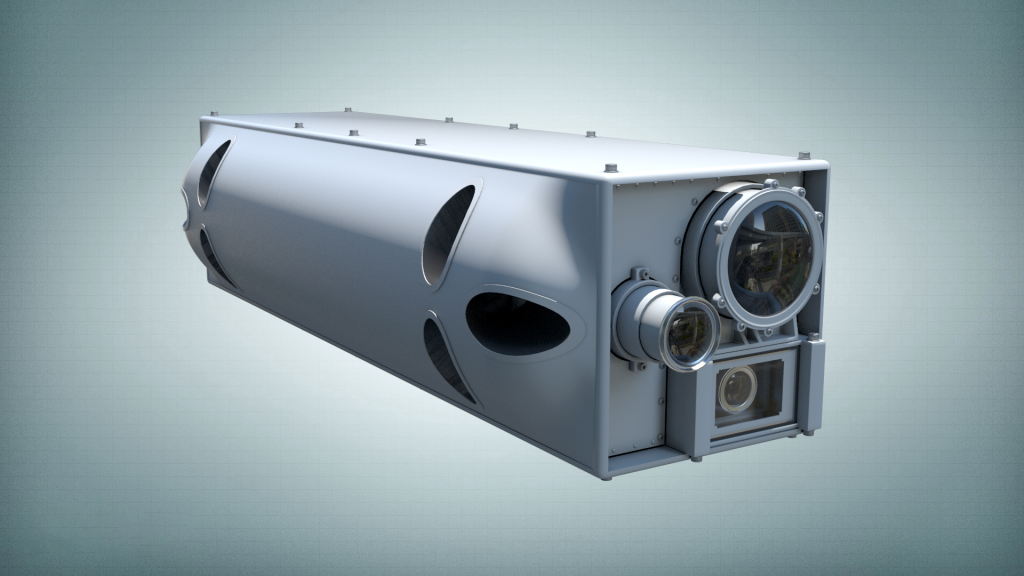
Small Observer drones will be employed to see close-ups of weld jobs and assembly operations by bots and pods. They will also be employed for deep space operations, mining facilities, and to check that shuttlecraft have their heat-shielding intact before reentry.
Medium-sized observers will watch over production machines creating modules and delivery operations.
Larger observer drones at cardinal points will give construction control a wide-angle view of the entire site and back up all the other drones to ensure nothing will float away undetected. These three classes of observer drones will give controllers a view of every part of the construction site at once.
Ambulatory Drones
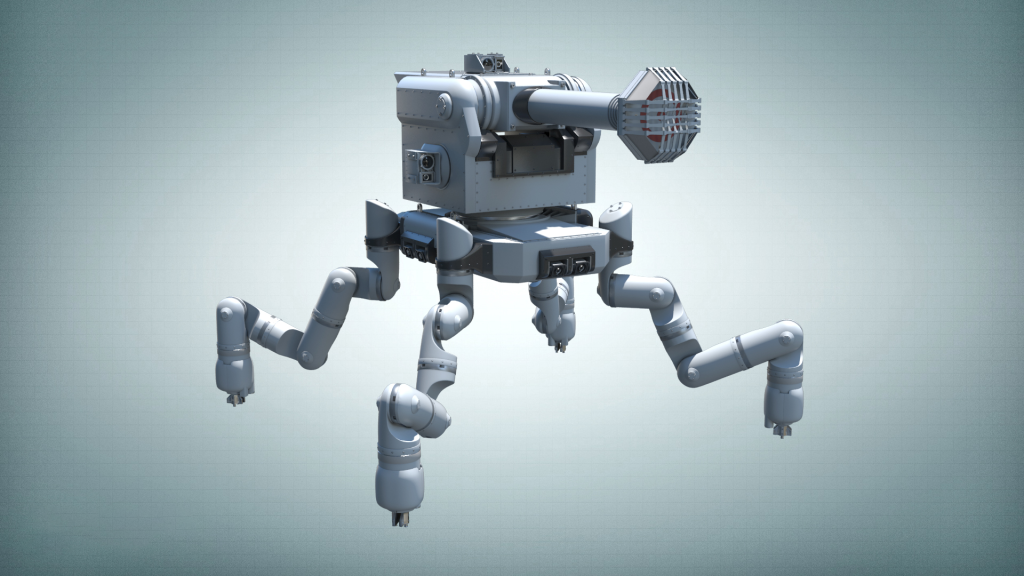
This second drone is an ambulatory-type drone. This drone has a lot of potential for future applications. This crawler-type drone is designed to work in close proximity to astronauts as they work on stations under construction or needing repairs.
This drone’s ambulatory mechanisms will allow for the development of many types of drones that move toolboxes, heavy batteries, and fuel cells into place as work sites need them. Right now, Astronauts have to drag toolboxes with them everywhere they go.
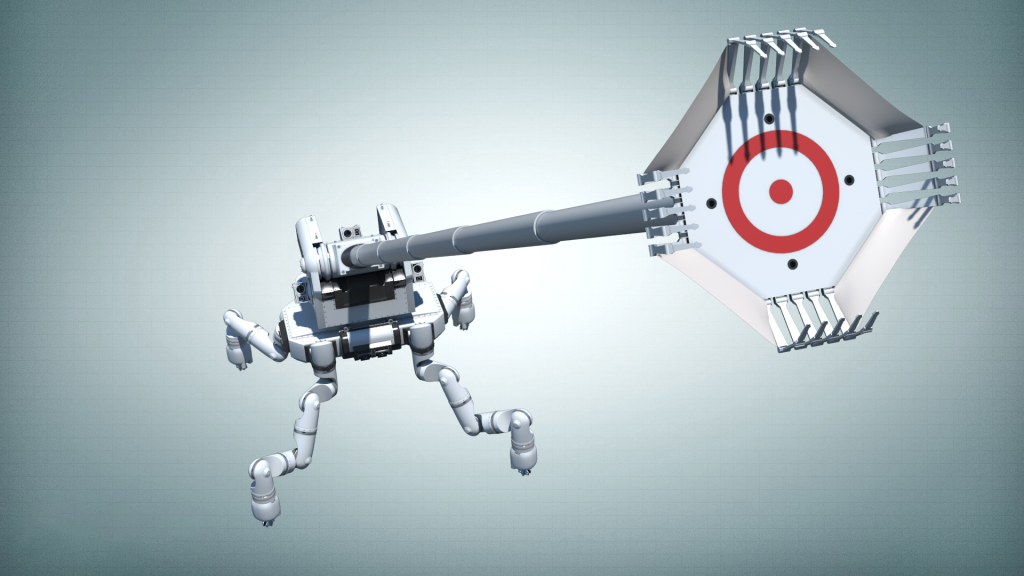
Retriever Drones
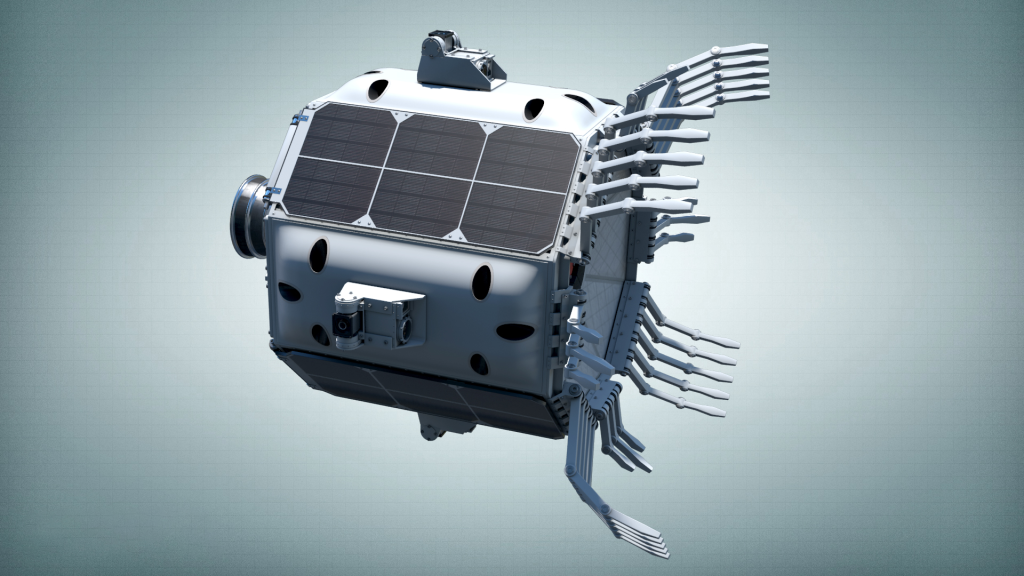
Like all these drone designs, retriever drones will be busy hunting down lost tools and parts, but will also become the worksite gofer. We envision many sizes of retriever drones, each suited to a specific task. But the smaller retriever drones will be used in many ways. For example, both astronauts and bots will tell retriever drones to fetch things from Tool Dispatch, saving them from leaving the worksite for the long time-consuming hand-over-hand walk back themselves. “Rover, fetch me a 10mm socket from TD”, says an astronaut from some distant part of the half-built structure. Shortly thereafter a small drone lifts off from its charging plate and then docks with a small port on the side of the Tool Dispatch module where a 10mm socket is ejected into Rovers “basket”. Rover then undocks, does a 180, and moves off to the waiting astronaut.
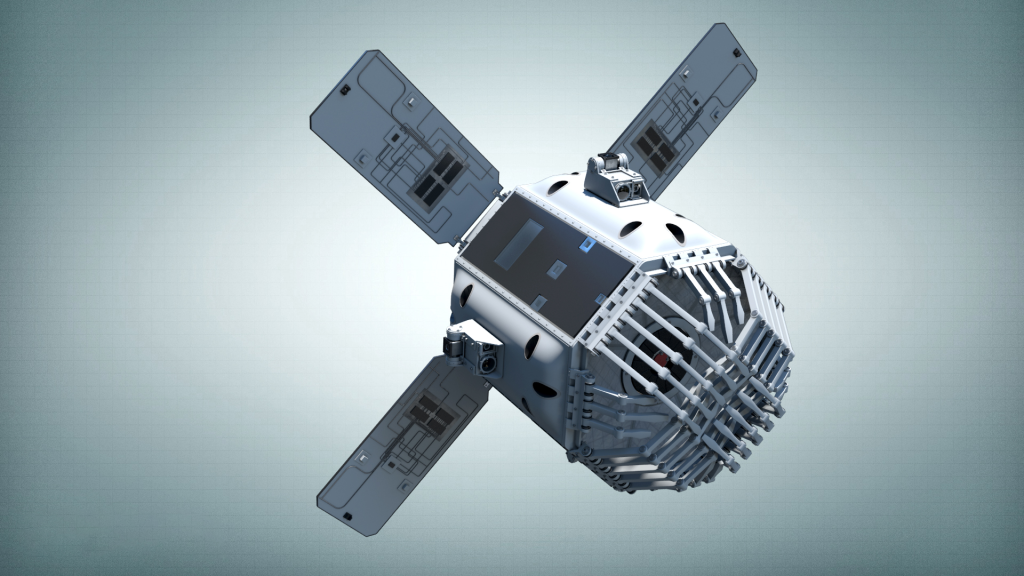
How fast can we build big structures?
One might think it would take years to develop these tools, but thanks to undersea drilling and exploration the prototypes for these suits and equipment have existed for decades.
“To confine our attention to terrestrial matters would be to limit the human spirit. ”
– Stephen Hawking
The Money
Last year in America Lotteries generated $70 billion dollars, over $300 billion dollars worldwide. The Gateway lottery will span the globe by way of the internet and generate the necessary revenue every year to fund this massive station. The Gateway lottery tickets will be purchased only from people who believe in space travel and want a chance to go, but the best part of using a lottery to fund the construction of this spaceport is that nobody contributes any money who does not want to, and those that want to may contribute as much as they want when it best suits their financial situation.
Lotteries are also egalitarian. Everyone who buys a ticket gets a chance to go regardless of who they are or where they are from. This system will reflect the world’s interest in space travel by having more ticket sales from areas where people believe space exploration and colonization are the next big thing.
The Will to Build in Space
Our mission is to gather people from all over the world who share the dream of seeing humankind move offworld. The first step to colonizing space and other planets is gathering and mobilizing like-minded people who share in this vision.
In the late 50s and early 60’s the passion for space exploration was shared by both The United States and Russia. Both competed feverishly in a space race that ended with an American being the first human to walk on the moon. Unfortunately, as with any race, a winner is declared and everyone goes home. After that first landing, we visited the moon a handful of times, but as economic realities and political priorities shifted, we gave up on the idea of real exploration, and we haven’t been back since. Looking back on those years, one can easily see that the people of that generation had The Will to do something monumental.
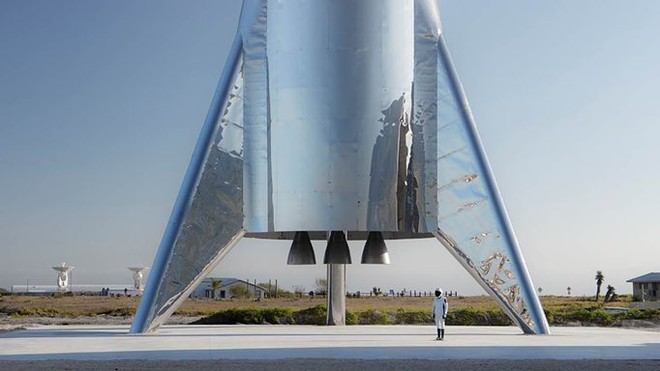
What’s the hardest thing about going to the moon? The Will to do it.
– Werner Von Braun
There is a passion for exploration that burns in the hearts of people all over the world to this very day. This new generation is ready to see humankind expand into our solar system and someday leave it behind. This new generation has The Will to colonize space. This new generation are the people who will be the bedrock upon which the future is built; they are the Gateway Crew.